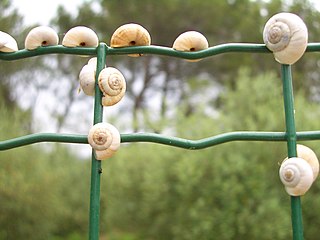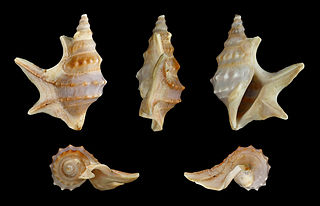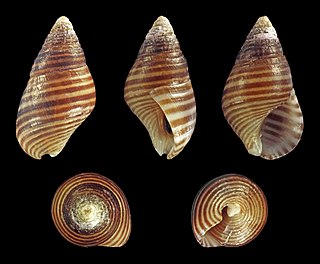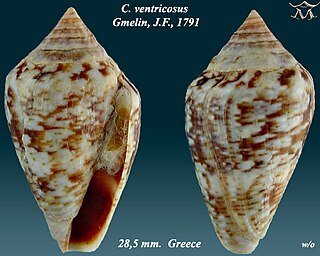
Bulla is a genus of medium to large hermaphrodite sea snails, shelled marine opisthobranch gastropod molluscs. These herbivorous snails are in the suborder Cephalaspidea, headshield slugs, and the order Opisthobranchia.

Brachylaima is a genus of trematodes that can infect the gastrointestinal tract of human beings.

Candidula is a genus of air-breathing land snails, terrestrial pulmonate gastropod mollusks in the family Geomitridae, . the hairy snails and their allies.

Helicella is a genus of small to medium-sized, air-breathing land snails, terrestrial pulmonate gastropod mollusks in the subfamily Helicellinae of the family Geomitridae, the hairy snails and their allies.

Cernuella is a genus of small air-breathing land snails, pulmonate gastropod mollusks in the family Geomitridae, the hairy snails and their allies.

Theba pisana, common names the white garden snail, sand hill snail, white Italian snail, Mediterranean coastal snail, and simply just the Mediterranean snail, is an edible species of medium-sized, air-breathing land snail, a terrestrial pulmonate gastropod mollusk in the family Helicidae, the typical snails.

Aporrhais is a genus of medium-sized sea snails, marine gastropod mollusks in the family Aporrhaidae and the superfamily Stromboidea.

Phasianella, common name the pheasant shells, is a genus of small sea snails with a calcareous operculum and a colorfully patterned shell, a marine gastropod mollusc in the family Phasianellidae.

Hinea lineata, common name the dwarf Atlantic planaxis, is a species of sea snail, a marine gastropod mollusk in the family Planaxidae.

Planaxis is a genus of small sea snails, marine gastropod molluscs in the family Planaxidae.

Lacuna is a genus of sea snails, marine gastropod mollusks in the family Littorinidae, the winkles or periwinkles.

Conus ventricosus, common name the Mediterranean cone, is a species of sea snail, a marine gastropod mollusk in the family Conidae, the cone snails and their allies.


















